9 Best Online Course Platforms [Updated for 2025]
4 comments
4 comments
You’ve spent countless hours and energy creating your online course masterpiece. Now, it’s time to get to the most rewarding part: selling it!
Do you know where/how you’ll sell the course?
You’ll need a platform to showcase and sell the course on, a user-friendly way for students to access the content, and a secure way to process payments - among a laundry list of other items.
So, which platform should you choose? You could hop onto Google, ask in various Facebook Groups, or even ask ChatGPT, but you’ll get dozens of different recommendations that may leave you in analysis paralysis, delaying your course launch until who knows when.
Never fear! I’ve combed through a variety of platforms and features to make it as easy as possible for you to choose where to sell your online course. That includes the ones I use myself. So let’s get straight to it so you can go straight to selling!
Before you consider drip-feeding content manually, setting up something in Wistia or Notion, or just winging it, let me stop you right there and tell you why it’s the only sensible move.
Yes, online course platforms cost money. And yes, that adds to the growing cost of creating a course and cuts into your profits, but they are well worth the investment for the following reasons:
By using an online course platform, you can streamline the course creation and delivery process, reach a broader audience, and provide a high-quality learning experience for your students. All of those are key to the success of your course and your ability to build passive income for your business.
Now comes the tricky part. There are a lot of course platforms out there, with more seemingly popping up every day. Which platform you choose should depend on the features you need.
No two online course platforms are the same (as you’ll see in the next section). But there are several features to look for in the platform that you choose.
Ultimately, it depends on your needs and the time you have to manage the platform. More complex platforms with lots of features will have a steeper learning curve, so bear that in mind when deciding which features are most critical for you.
Here are some of the top features to consider:
Read on for my list of platforms to choose from.
Why trust my opinion?
For one, I’m sharing my objective take, having worked with hundreds of coaches and consultants to launch thousands of online courses. This isn’t some roundup from a software company trying to sell you on them being the best.
I considered feedback from my customers alongside my own experience to evaluate each platform based on:
Rest assured, you really can’t go wrong, so keep reading for my nine favorite course platforms!
It can seem like there are countless course-creation and course-selling platforms on the market. It’s enough to make your head spin!
If you’re stumped on where to sell your course, here are nine solid recommendations for you to choose from. Depending on your needs and budget, one platform may be better than the other, so it will be up to you.
My favorite online course platforms are:
Keep reading for an in-depth review of each one!
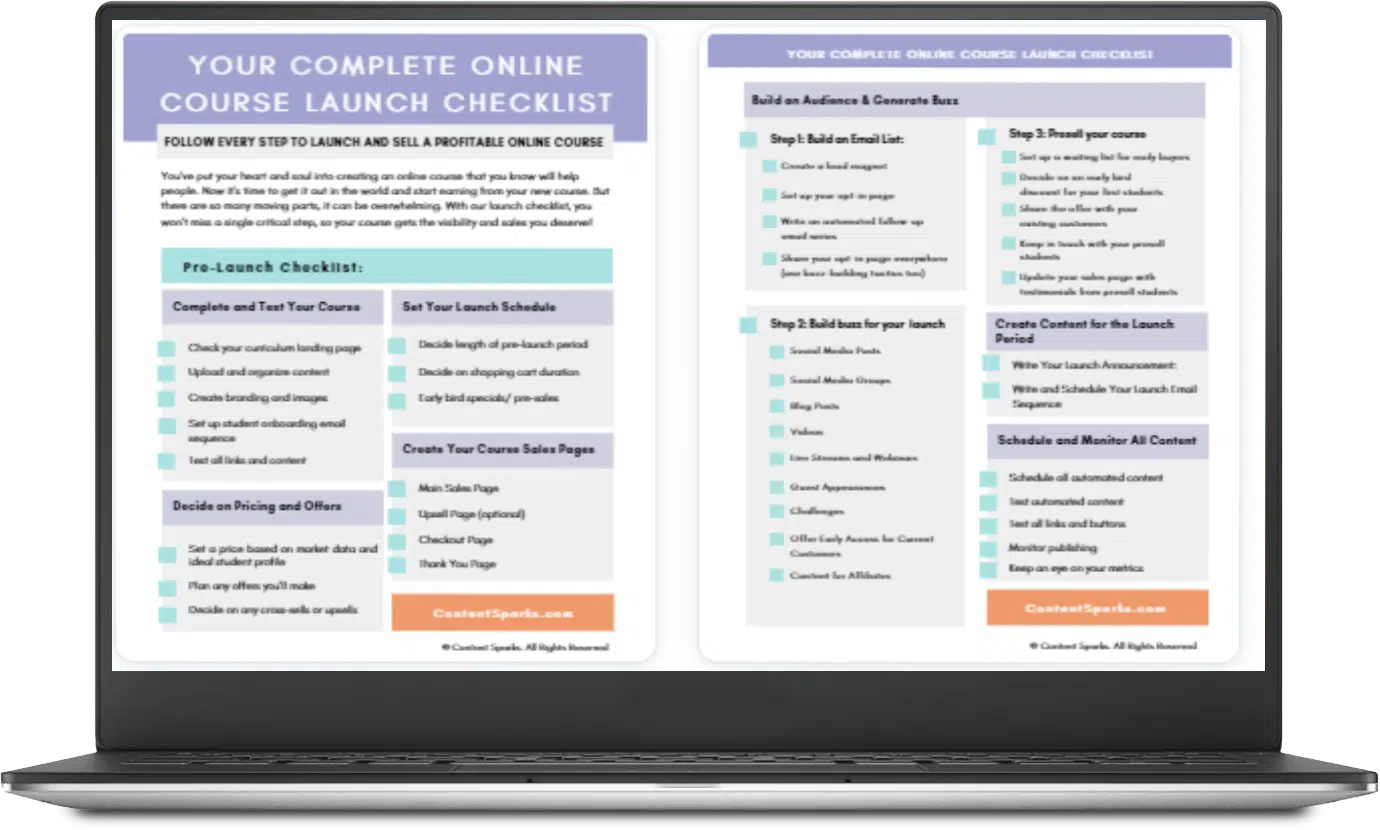
The Ultimate Online Course Launch Checklist
Use this checklist to take action with your online course today!
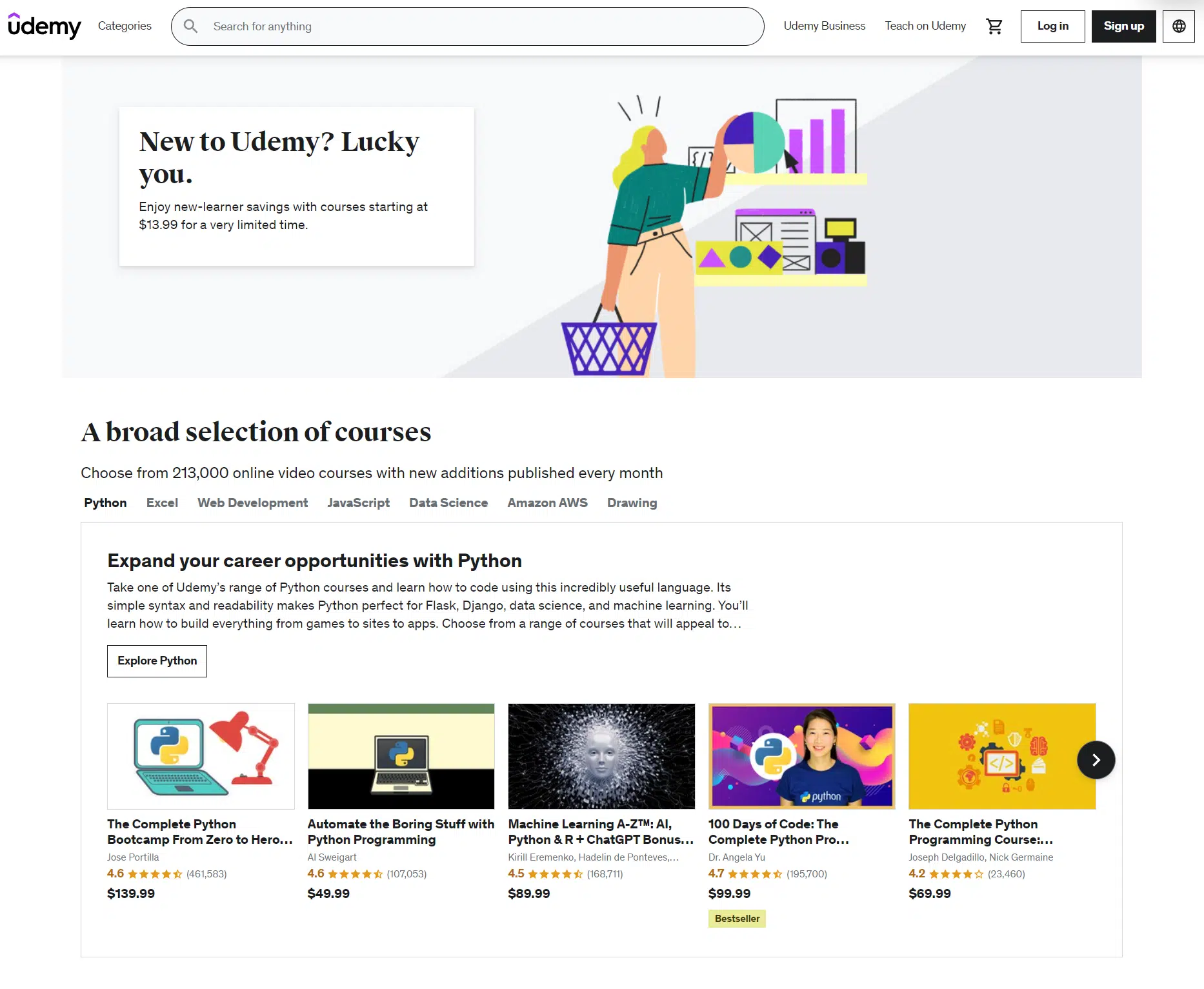
Udemy is a well-known and popular course platform. In fact, it’s estimated that Udemy boasts over 200,000 courses on its platform, so you’ll be in good company.
Some of the highlights of Udemy include:
Pricing
Udemy is free to sign up and create a course, but you will start paying once your course makes money. Instructors receive 97% of the revenue generated from sales using the link that Udemy gives them, but only 37% of sales occur off that link. For example, if you make a sale by sharing the special Udemy link on Twitter/X, you will get 97% of that sale. Later down the line, though, if someone finds your course on Udemy, you will get 37% of the sale.
LearnWorlds is another popular course creation and delivery platform with a twist: they’ve gone all-in on everyone’s favorite topic, AI.
In addition to a suite of tools for course creation, editing, sales, and delivery, LearnWorlds includes powerful AI features like their AI assistant, which can help you plan, create, and edit your courses.
Some notable highlights include:
Full suite of course creation and delivery tools
AI assistant to help plan and create course content
White label app to host your business
Pricing
LearnWorlds starts at $24/month (for the yearly plan) with an additional $5 per course enrollment. Higher tiers don’t include that fee. They offer a free trial for their self-service tiers and scale all the way up to custom corporate plans that you need to speak with them about in order to purchase.

Teachable is a popular platform for new course creators thanks to its user-friendly interface and course authoring tools. In fact, it’s the first platform I used for my own courses, and I still highly recommend it for newbies who don’t want to be overwhelmed by the tech. Teachable gives you a great deal out of the box to create branded pages as well as marketing and sales tools to launch your course. They even have options for selling coaching and downloads.
Some notable highlights include:
Custom branding
Various pricing options for your courses
Integrations with popular marketing tools
Free plans are available to get started
Pricing
You can create a free Teachable account to get started, their paid plans start at $39 per month (if you pay annually), plus a 5% transaction fee on all course sales.
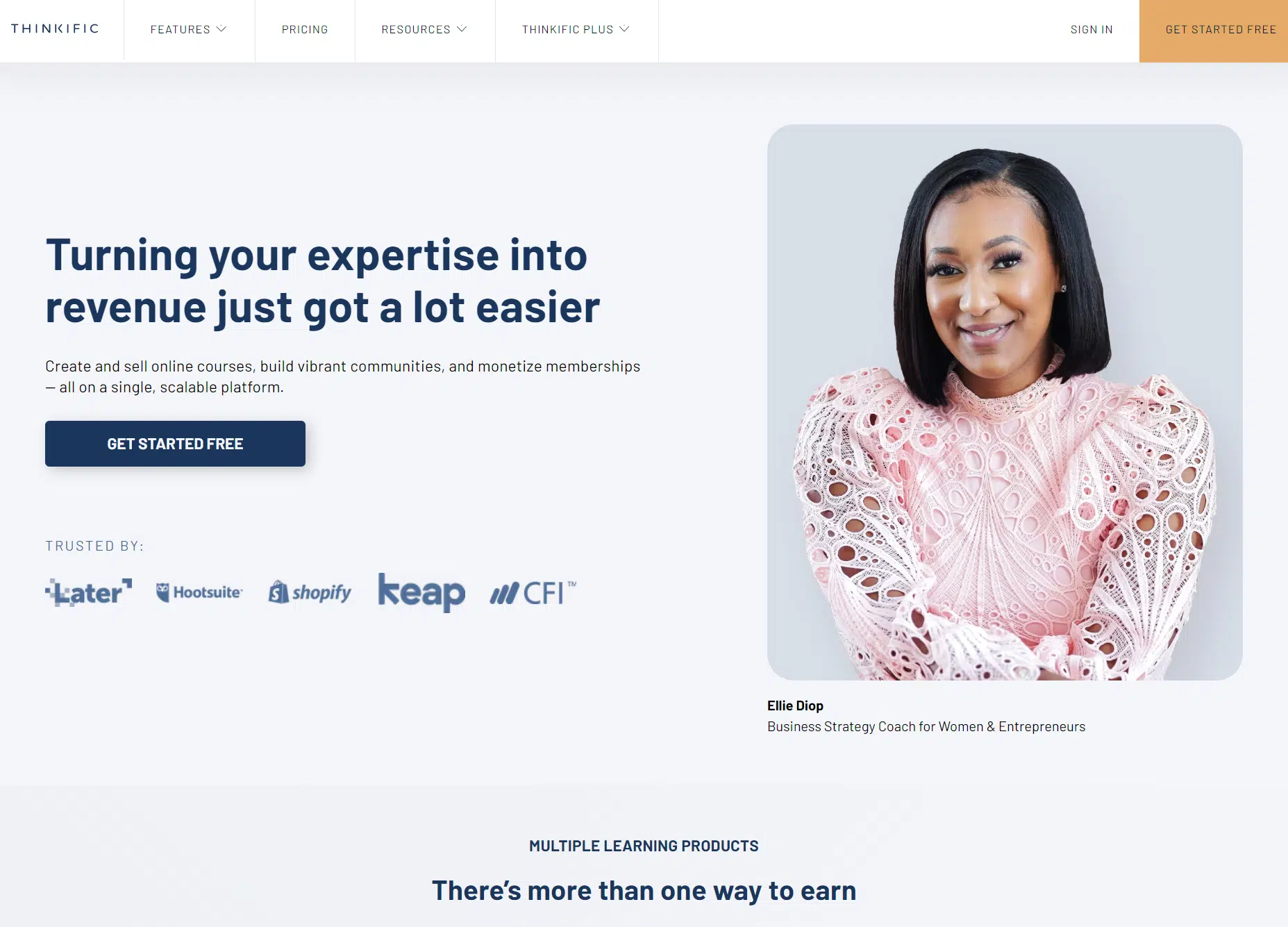
Like Teachable, Thinkific is an online course creation platform that includes templates and page builders. You can create courses, presell courses, and build your funnel all in one platform.
Some notable highlights include:
Samples and templates to get started
Integrations with popular marketing tools
Starts free for one course
Pricing
You can create a free Thinkific account to get started, and their plans start at $36 per month (if you pay annually), and there is no transaction fee.
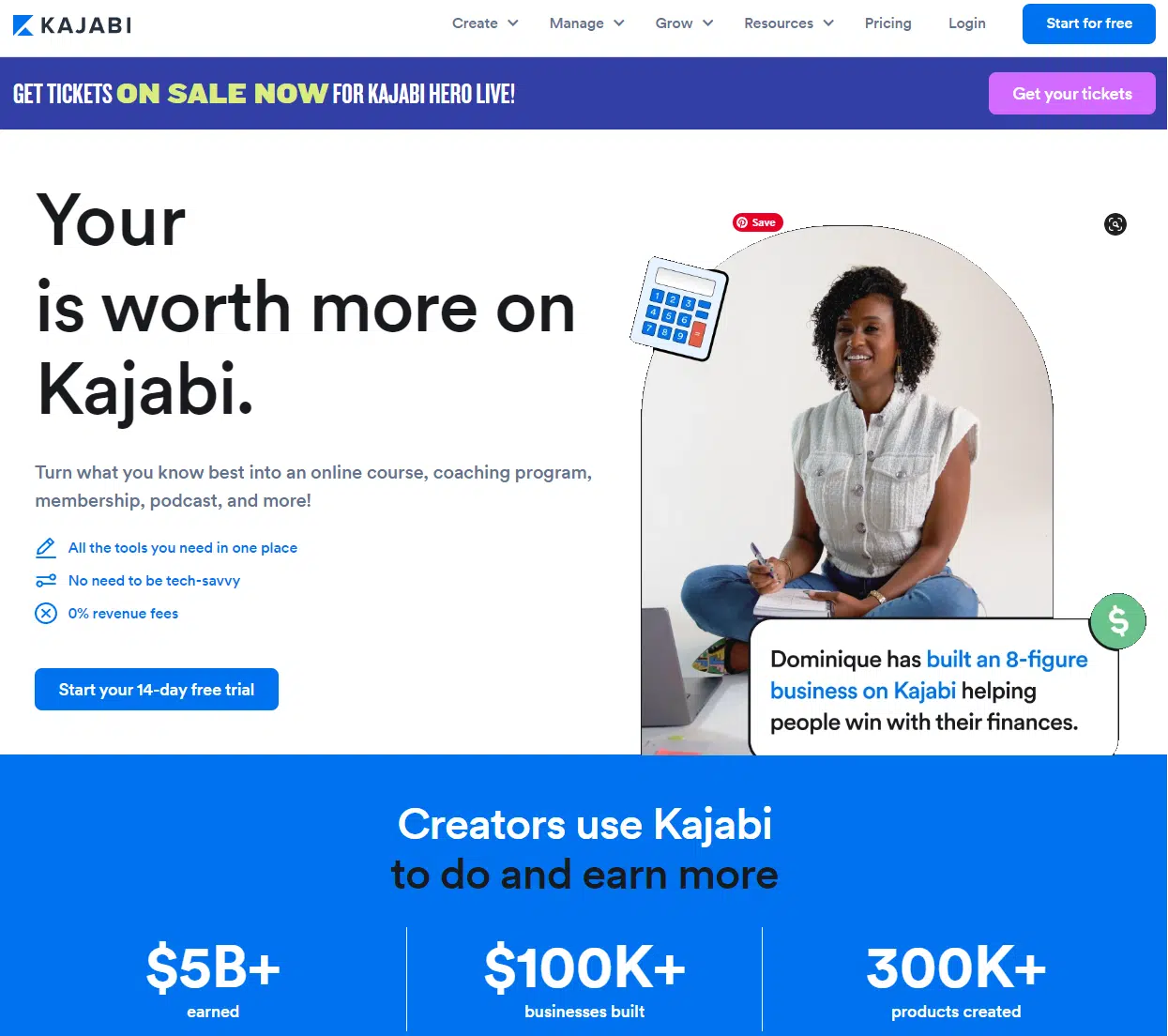
For those looking for a powerful course marketing and automation platform, Kajabi may be the right fit for you. Kajabi provides course-creating tools, but they also excel at their marketing and automation tools to help you market and sell your course.
Some highlights include:
Email marketing tools
Templates to get started
Automation tools
Pricing
Kajabi is pricier than the other options; it currently starts at $119 per month (if you pay annually), and does not charge a transaction fee on course sales.

New Zenler is one of our favorite platforms due to its comprehensive suite of tools for the price you pay and ease of use. It provides course-creating tools, landing page builders, and more to build and brand a course that will wow your students. As I write this, they still say they’re in beta, but it’s been that way for several years, since they’re always adding new features. There’s nothing ‘beta’ about it!
Some highlights include:
Easy-to-use course creation tools
Quiz and survey builders
Marketing funnels
Marketing automation tools
Livestream and webinar options built in
Community building tools
Pricing
New Zenler has a free plan, and then it currently starts at $67 per month (if you pay monthly) and does not charge a transaction fee.
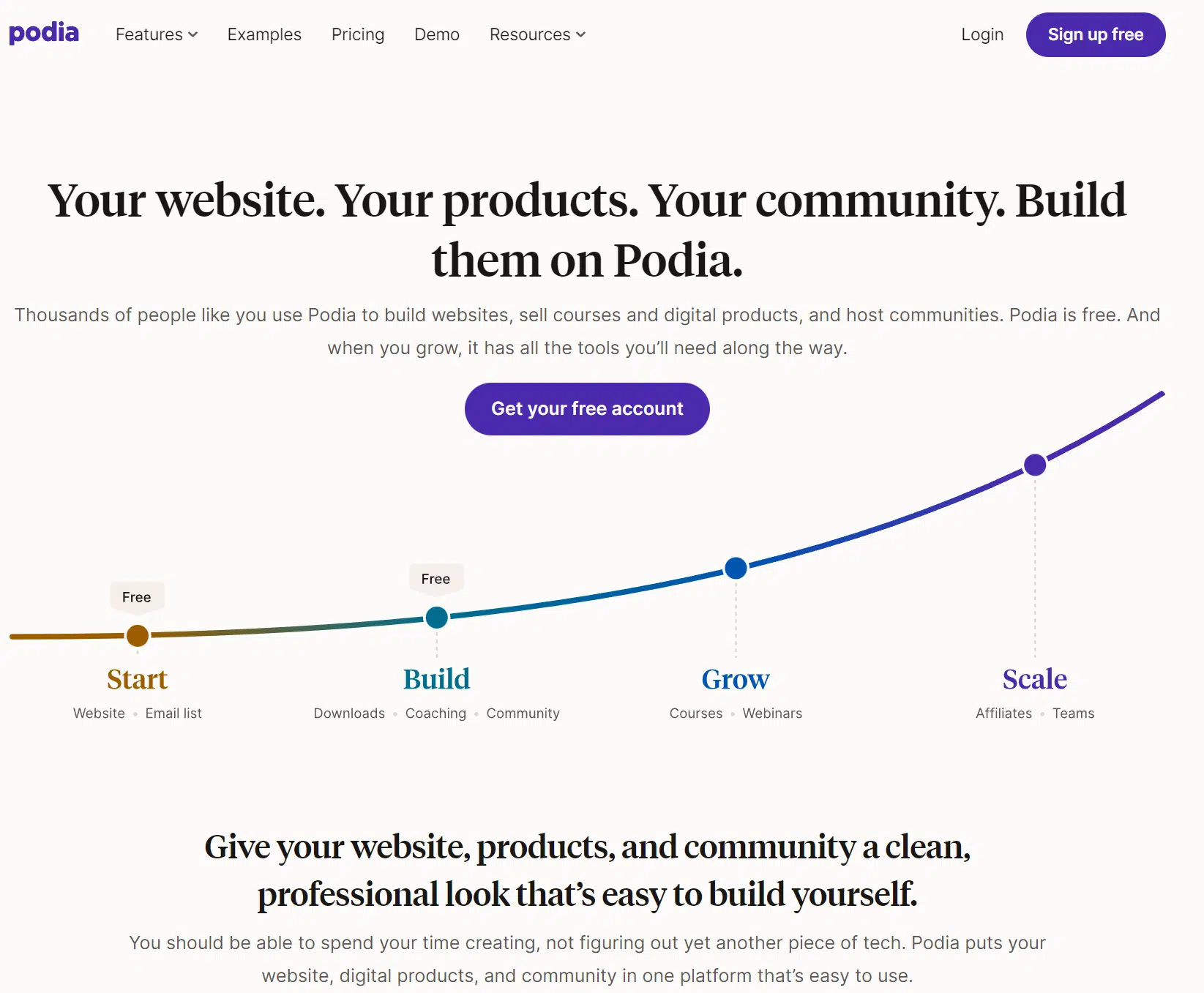
Podia is a great platform for new course creators due to its ease of use and simple e-commerce functionality. Podia provides tools to create courses, set up membership sites, and sell your courses as you grow your business.
Some notable highlights include:
Support for digital downloads
Bundling options for courses
Private membership tools
Pricing
You can create an account for free, and paid accounts start at $33 per month (if you pay annually) with no transaction fees.
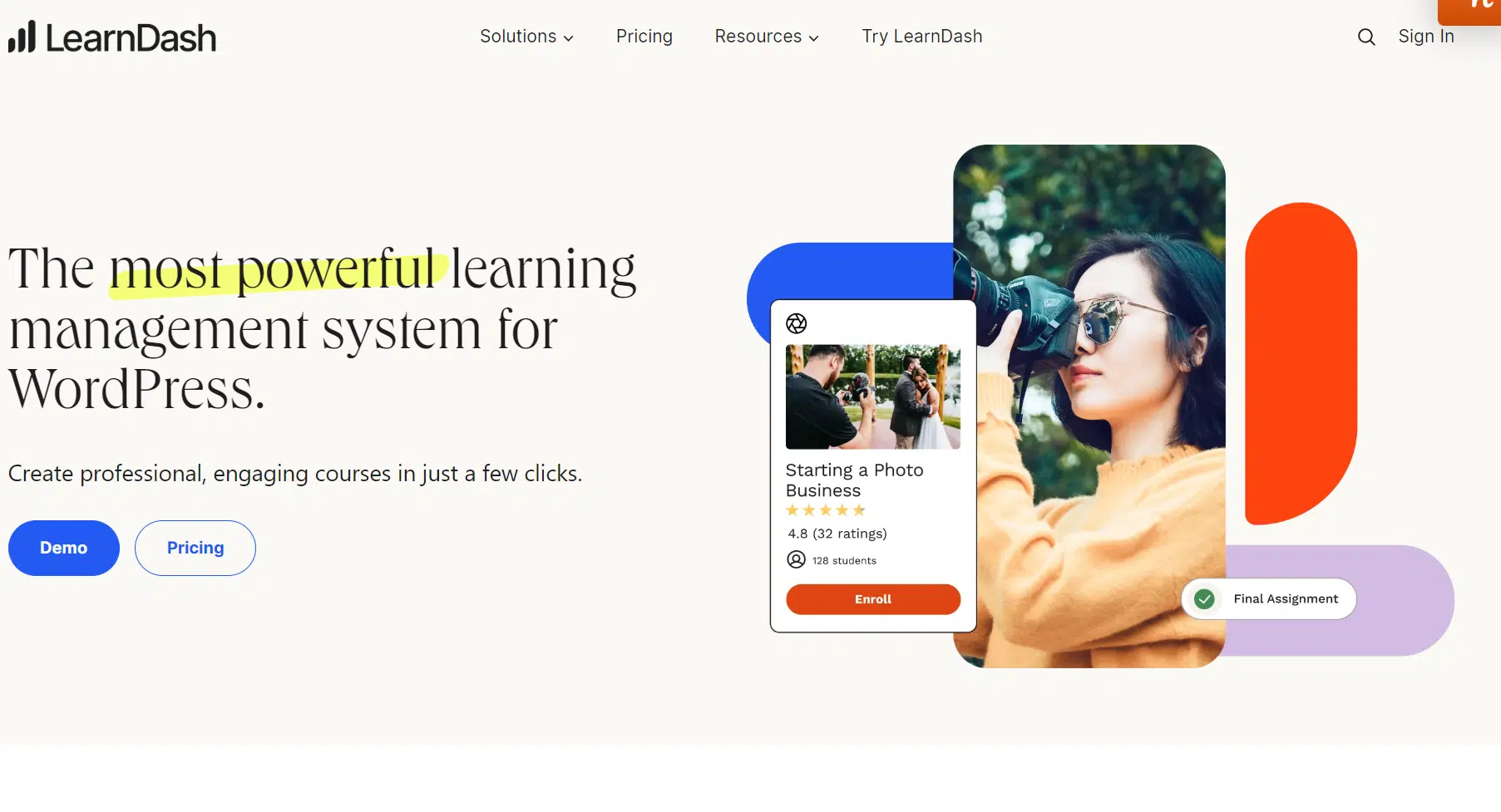
Learndash is a popular platform for those with WordPress websites. As a content management system (CMS), WordPress allows a ton of flexibility and customizability, which is where LeardDash excels. Learndash turns your WordPress website into a learning management and course-selling tool that is integrated with the rest of your website.
Some notable highlights include:
Pricing
LearnDash starts at $199 per year for one website. They also have a cloud-hosted software option, which starts at $24 per month (if you pay annually).
LinkedIn Learning is a bit different from the other platforms listed in that you can’t just sign up and publish a course; you need to be accepted onto the platform. There’s a bit of exclusivity here that may help set your course(s) apart, but it does create a higher barrier to entry. If you’re newer to your industry or have not created a course before, I recommend self-publishing.
If you are an industry expert, though, and want to benefit from LinkedIn’s brand, then this can be a great option to distribute your course to a larger audience.
Some notable highlights include:
Pricing
LinkedIn Learning is free – in fact, LinkedIn shares the revenue from your course! That said, you do need to apply, be accepted, and pitch your course before you go live.

The Ultimate Online Course Launch Checklist
Use this checklist to take action with your online course today!
Now that you've chosen your trusty course platform, it's time to get to the fun part: selling!
Successfully launching a course can take some time to get right. While I’d love to share a one-size-fits-all approach to marketing and selling a course, the truth is that the exact steps you follow will depend on your audience, the material for the course, and your own expertise and brand.
That said, there are five steps you need to follow no matter what:
Know your audience: Every successful launch starts with a solid understanding of your target market. Your target customer should inform every aspect of your course creation and sales efforts.
Publish on a platform: Upload your course onto the chosen platform (perhaps one of our fantastic nine above?) and make sure it's polished and ready for potential students.
Create an enticing sales page: Next up, you need to build a sales funnel. Your sales page should captivate potential customers with engaging, informative, and persuasive content that showcases the value of your course.
Develop a sales strategy: Craft a well-rounded sales strategy that combines outreach and an enticing sales sequence to attract and retain students.
Promote, promote, promote: Spread the word about your course far and wide! Develop a promotion strategy that builds your audience and funnels enthusiastic learners to your course.
Selling a course may seem daunting, but with the right platform and a solid plan, you'll find yourself on the path to success in no time.

To sell your course (and make a profit), you need to promote it.
Promoting a course is a broad subject. I covered my 20 favorite course promotion tactics in depth, but here are a few quick hits to get you started.
Network at local seminars and meetups to get in front of your target audience
Join an online group (Facebook, Slack, or Discord)
Write guest blog posts to build your website’s authority and reach
Leverage social media and grow your following
Build an email list, and email them regularly, so you are always top of mind
Showcase testimonials from past customers to provide social proof
Broaden your reach with ads (either on Google or social media)
Pick the ones that sound easiest to you for a great head start. Then check out the rest of the tips in our blog post for more advice as you build your course launch plan.
Choosing a platform for your online course is just one piece of the puzzle. Once you have that settled, you need to launch it!
A successful launch doesn’t happen by accident. It takes work, thought, and planning to make sure everything goes just so (and results in you getting paid for the effort). For instance, you need to:
But if all this is making you break into a cold sweat, take a deep breath. I’ve got you covered. Click the button below to download my free course launch checklist. It’ll teach you how to do all the above and more to ensure your launch is a smashing success!
Enjoy!

Tags
Comments are closed.
The curation of online course platforms is spot on, Sharyn. I joined Teach:able when it was still Fedora and loved the platform so much that I got a Basic Subscription. They keep adding new services and facilities and handle taxes for a small fee. Marketing is always a must to benefit from this platform and I'm currently exploring Udemy for a marketplace course to raise my visibility.
Thanks Vatsala! It will be interesting to hear what you end up doing with Udemy. I have mixed feelings since I don’t like being on a platform that isn’t your own. And if you’re going to spend a lot of time marketing yourself, I’d rather build an audience on my own turf and not have to give a huge cut of sales to someone else (except affiliates who send me traffic!) Let me know how it goes.
Wow Sharyn You have shared some great information here. Good to be able to refer back to when I am ready to launch my course.
I’m so glad this was helpful, Fran. Let me know any time if you have specific questions. Don’t wait to launch your course! Even if you don’t get into promoting it immediately, the quicker you have a minimum viable course set up, the faster you can profit from it, even if it’s just a little. And once it’s set up on a platform, you can focus your spare time on building an audience who will benefit from it and be interested in buying. That includes any mini-course that acts as a lead magnet vs. a paid course. Those are just as important. See which platform you think will suit you best, and then sign up for a free plan.